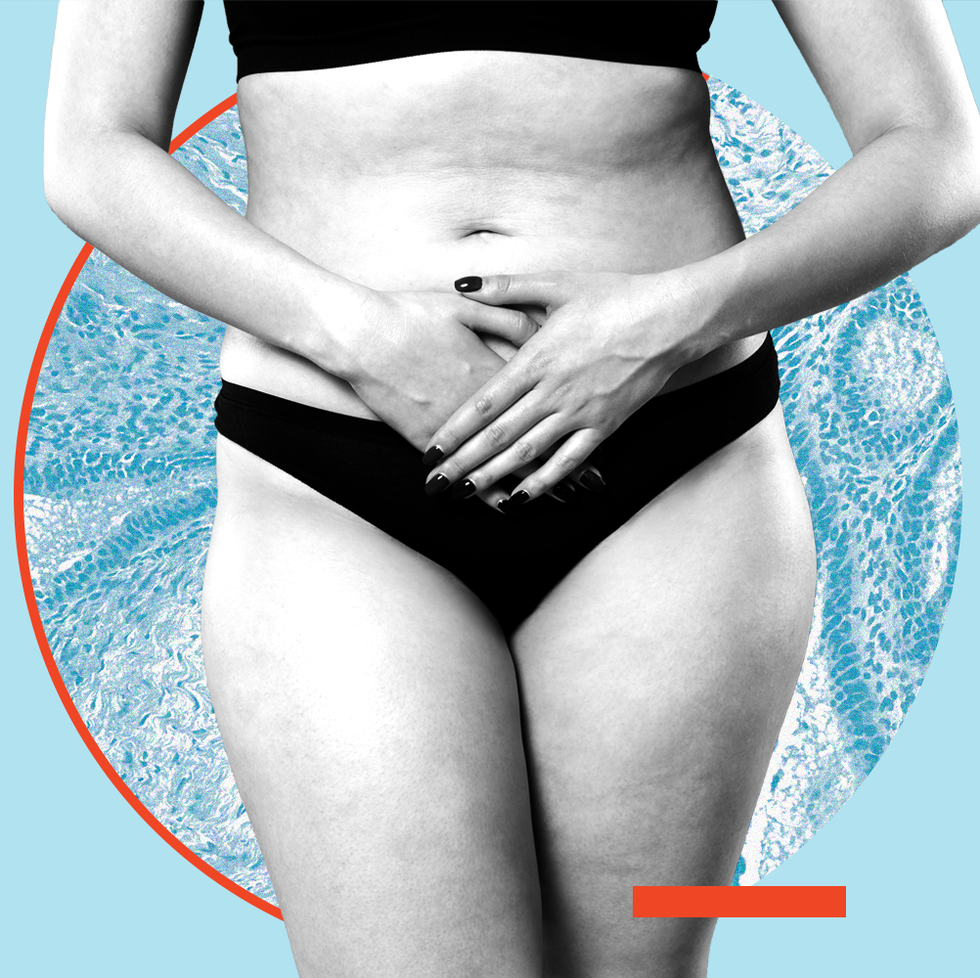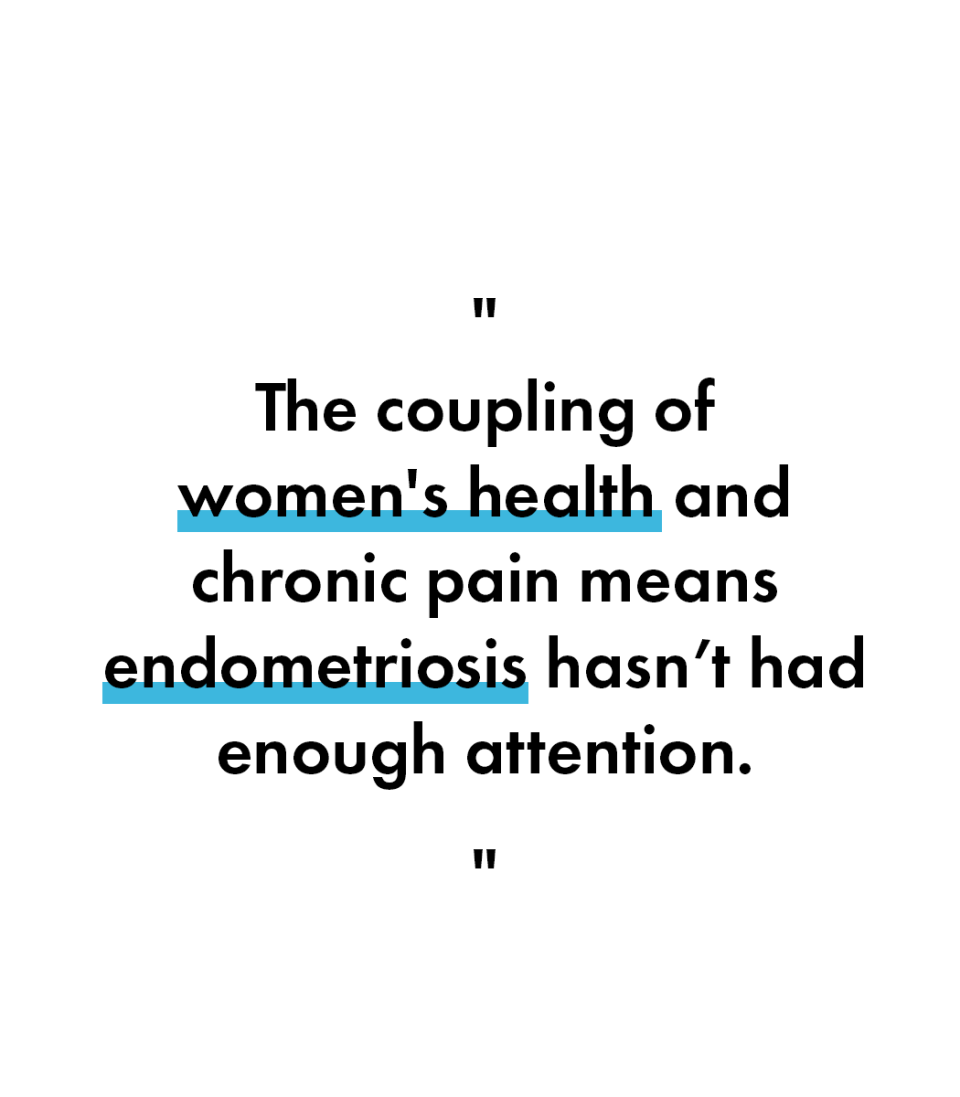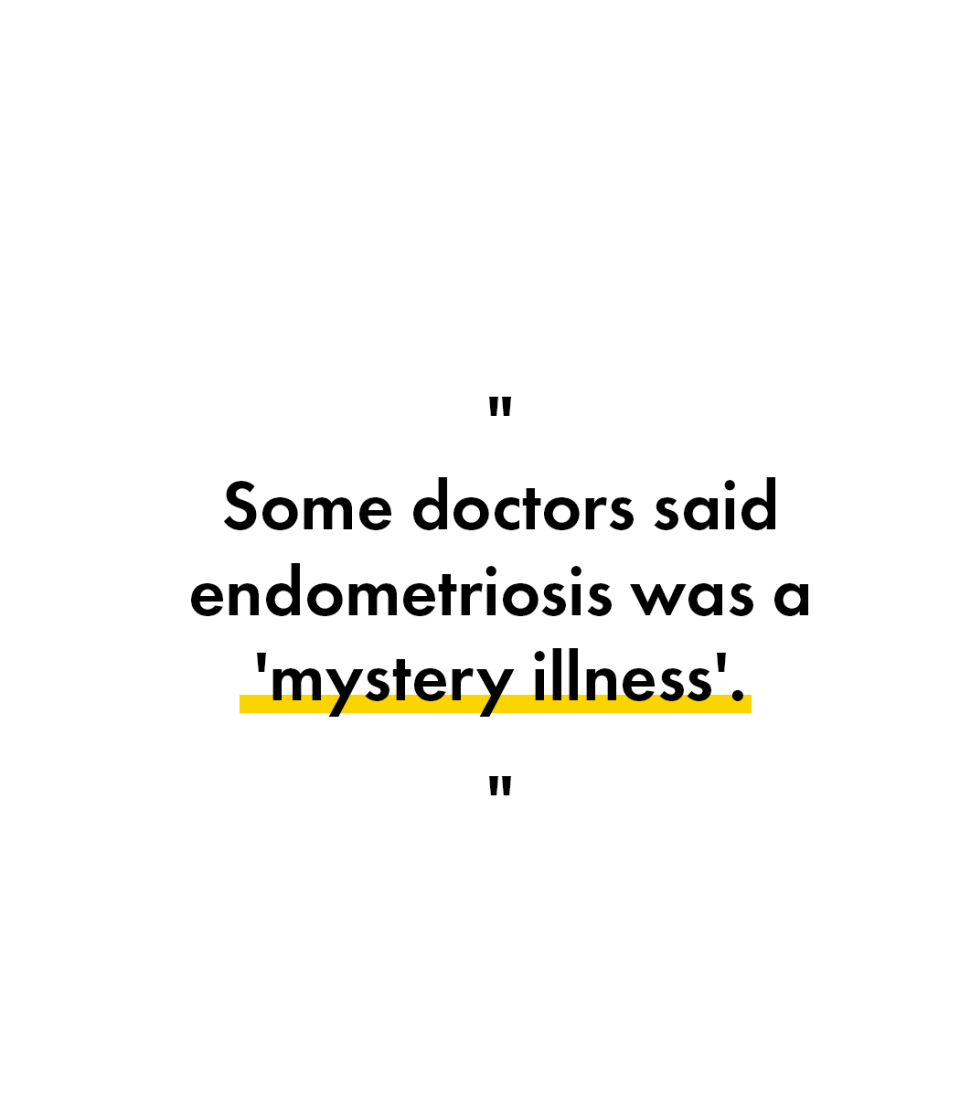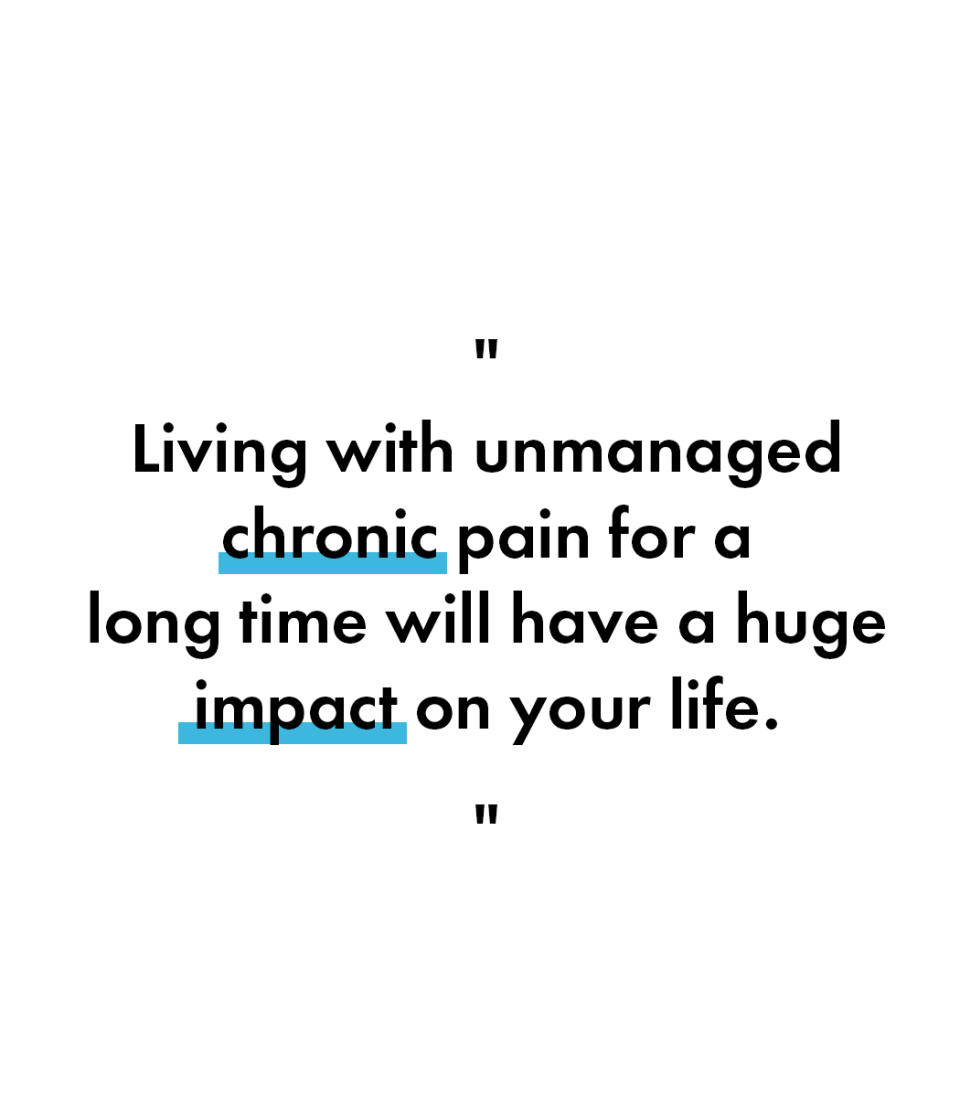The new big changes to the way endometriosis is diagnosed

It happened every month. The excruciating pain in Phoebe’s tummy would seem to knot and twist until she could barely stand up. Sometimes, she would faint because of it, or become nauseous with agony. But, to Phoebe’s surprise, her doctor brushed it off, presuming her call for help was just the hyperbolic cry of a young woman not yet 'used' to her menstrual cycle. 'This is normal for anyone who has periods,' he told her. 'Your body is just adjusting.'
It took eleven years of pain and countless doctors' appointments for Phoebe to eventually be diagnosed with endometriosis. She had spent so much time screaming into the void that she was actually happy when she was finally diagnosed with a condition in which tissue grows on the uterus, ovaries and fallopian tubes, causing (among other symptoms) chronic pain, heavy periods, spotting and stomach problems. It was a relief to finally be listened to.
In the UK, endometriosis affects roughly 2 million women - just as many as are affected by diabetes. It means living with chronic pain that has devastating consequences on their bodies, mental health and lives - and yet there is an alarming amount of anecdotal evidence telling us that those with the condition have to fight for their symptoms to be taken seriously.
It takes an average of eight years to get a diagnosis for the condition. As part of Cosmopolitan’s investigation into the gender health gap we’re asking why diagnosis takes so long, what it means for the person suffering through it and how new guidelines could impact the future of getting an endometriosis diagnosis.
A culture of disbelief
"I always felt like they were trying to get rid of me," Jasmin tells me. She was diagnosed with endometriosis in her thirties, even though she had first been to her doctor about her symptoms at the start of secondary school. "I visited the GP several times and I was advised that my symptoms (very heavy periods, severe pain, fatigue and IBS-symptoms) were 'normal'. I was offered antidepressants and sent away."
According to Professor Andrew Horne, a gynaecological specialist at the MRC Centre for Reproductive Health in Edinburgh and Co-Director of EXPPECT endometriosis research team, the combination of endometriosis as a condition that can affect anyone with a uterus and a chronic pain condition has had a disastrous effect.

"Women's health conditions generally haven't had the same attention as typically male conditions, in terms of both clinical investment and research," he says. "This is largely because the funding was historically led by men. And because of a lack of understanding from men of how common these conditions are, and what impact they have on a patient's quality of life.
"Chronic pain conditions also haven’t had investment because pain isn't visible. It's not like having a broken arm or even having asthma or diabetes where the scale of the issue is more obvious. So, the coupling of women's health and chronic pain means endometriosis hasn’t had the attention it deserves."
Because, as Andrew says, we can’t quantify pain, sufferers are victims of subjectivism, meaning that unconscious bias is allowed to take over. It’s the same unconscious bias that meant that 'hysteria' was the diagnosis given to women suffering from a range of conditions (anything from pain to fluid retention) in the 18th Century. And, although we wouldn’t get that diagnosis now, women are often still treated as if they are hysterical. Research shows that females are less likely to receive aggressive treatment for pain than males, are more likely to have their pain reported by a doctor as "emotional" and "not real", and that men are more likely to have pain treated by painkillers, while women are given sedatives or antidepressants. While the 'hysteria' diagnosis itself is long gone, the sentiment - it seems - remains firmly in place.
When 29-year-old Al first sought help for her symptoms, including the excruciating back pain caused by her undiagnosed endometriosis, she was told it was down to depression. "I was exhausted and burst into tears in the doctor's office; she barely examined me before she diagnosed me with depression, and said the back pain was a symptom of that," she recalls. After being sent away with the number for a mental health helpline and some stronger painkillers, Al was also referred for physiotherapy for the back pain. "But the physiotherapist didn't think I had any back problems. I still did the recommended exercises, but nothing was helping."

In January 2020 the pain Al was suffering had become so unmanageable that she would be unable to move for hours at a time. "I remember one time where I passed out on the bathroom floor, I was screaming in pain, with the sweat running off me. And one night, the pain was so bad in my side and pelvic area, I ended up in A&E. My girlfriend and I were convinced my appendix was about to burst."
In Al and Jasmin’s cases unconscious bias meant that there was an automatic inclination to dismiss their pain as imagined offshoots of a mental health problem. Additionally, all these women have been confronted with the normalisation of female pain; the idea that being a woman simply hurts.
Like Al, Jasmin and Phoebe, 35-year old Les believed the pain she went through every month was a normal part of having a period. Even when it was so excruciating it caused Les to vomit.
"I thought it was just my luck. The pain was so bad at times I would have to leave work, and I took strong painkillers for many years. Even though I vomited a lot on my periods, I really just thought it was just shitty painful bad luck. I had no clue about endometriosis at the time."
For Les, the problems persisted. It took 12 years, several doctors and a lot of their own research for them to get a diagnosis and treatment. Some doctors even told Les that endometriosis was a "mystery illness".
A difficult diagnosis
Awareness of a condition is the first line of defence in battling it. It’s how we know that something isn’t normal; the reason we go to our doctor as soon as possible; and the reason we keep going back if the problem doesn’t improve. Currently, the lack of awareness surrounding endometriosis is allowing it to thrive.
"Many women aren’t aware that severe pain with menstruation isn't normal and that patients shouldn't have to suffer with this," Professor Horne explains. "Or maybe women in their family also aren’t aware and have told them it’s normal. So then they’ve not sought help. And then at the next step, when they do seek help, they may have met with a medical practitioner who wasn't aware of endometriosis, or didn't understand the impact that the pain was having on the quality of life of the patient."
One of the reasons why those suffering are given treatment for other conditions before endometriosis is, according to Professor Horne, because its symptoms cross over with others like irritable bowel syndrome, or interstitial cystitis.

To complicate things further, there is no non-invasive test for endometriosis. You can't just turn up at your GP and have a urine or blood test. Sometimes it can be detected on scans, but the most common type of endometriosis (peritoneal disease) doesn't show up on scan and you have to have a laparoscopy surgery [keyhole surgery through the abdomen] to make the diagnosis. This means, Professor Horne says, that doctors will sometimes want to try less invasive treatments before committing their patients to a surgical procedure. However, he adds, this doesn’t mean that endometriosis shouldn’t be discussed with the patient.
"I helped write the national guidelines for endometriosis and these say that if somebody presents with symptoms suggestive of endometriosis, it's perfectly reasonable to offer the patient a short treatment with something like a combined contraception or ibuprofen to see if that helps. But the doctor should still say to the patient, 'We think you might have endometriosis and here is the option to be referred to hospital and have a laparoscopy'."
A chronic problem
The implications of not taking pain seriously are critical. "If you live with chronic pain, it’s going to have a major impact on your ability to function," says Professor Horne. "And living with unmanaged chronic pain for a long time will have a huge impact on your life."
After almost a decade of dealing with her symptoms, Al says she feels "broken", while Phoebe has suffered poor mental health as a result. "When the pain is at its worst I despair. I’m bedbound and have to miss seeing friends," she says. "I hate having to factor my pain into every decision I make… and it affects my family and friends too; I’ve had to watch one of my best friends crying because she saw me in so much agony."
The psychological impact of prolonged chronic pain is one thing, but with the sparsity of endometriosis research, we don’t understand the disease fully enough to know exactly what the physiological implications of a dragged-out diagnosis could be. The endometriosis could very well be worsening for a patient with every passing year they go without treatment.
While discussions surrounding the gender gap in healthcare are becoming more common, we still have a long way to go before we close the gap and stop those with conditions like endometriosis enduring unnecessary suffering. Al struggled with the pain for years before seeking help because her mum told her "that’s what it’s like to be a woman." But if we all knew more about the condition, that knowledge could help others avoid the prolonged and unnecessary struggle that is so common with endometriosis. And if we can know more and expect better, then we can help to change the attitudes and misconceptions that have contributed to such extended suffering.
Change is in the air
Up until now, the lack of guidelines when it comes to getting an endometriosis diagnosis have left those with the condition suffering for years. But this could be about to change, as scientists have informed a new set of clinical guidelines to aid better diagnosis, which should have a profound impact on the physical, mental and social well-being of the endometriosis community.
Speaking about the new guidelines Professor Ertan Saridogan, who has been working with the European Society of Human Reproduction and Embryology (ESHRE) since 2003, said: "Having new clinical guidelines means better support and treatment for the millions of women who suffer from endometriosis and do not get the attention they deserve."
The expert went on, "It also outlines the diagnostic process, challenges the current laparoscopy and histology used as the overall gold standard diagnostic tests, and it evaluates surgical, medical and non-pharmacological treatments."
The guidelines include over 100 recommendations on diagnosis, as well as treatments for pain and infertility among other medical conditions. As for what these guidelines mean for real-life people with the condition, Professor Christian Becker, who chairs the Guideline Development Group, said: "We hope that the new ESHRE Endometriosis Guideline will assist both patients and healthcare professionals in their decision making and understanding of the condition."
And it's not just medical professionals who have welcomed the guidelines, with endometriosis advocate Kathleen King also praising the positive impact we can expect to see. "Patients can feel confident in using the guidelines to open discussions with their healthcare professionals and in turn their healthcare team have a guide based on current best practice and scientific information," she said. "I encourage all those with an interest in endometriosis to make full use of the guidelines."

You Might Also Like


